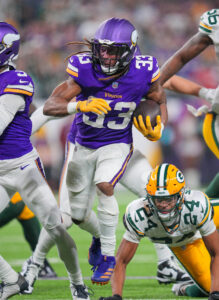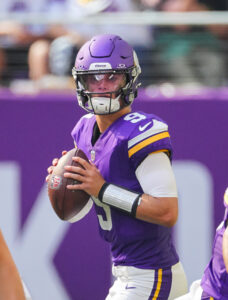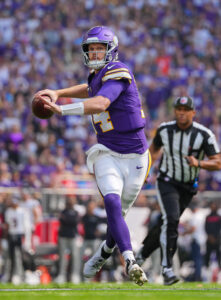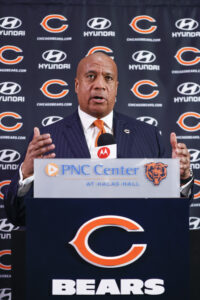Aaron Jones‘ seven Packers seasons featured regular roles but saw the talented running back cede plenty of carries to the likes of Jamaal Williams and AJ Dillon. Despite having just turned 30, the veteran back has held an unquestioned starting post with the Vikings.
The eighth-year performer has already surpassed his career high in carries (245), producing his fourth 1,000-yard rushing season. Although the Packers were not exactly proven wrong for their Josh Jacobs signing, Jones has fared well with a division rival — one that has soared to a 14-2 record. Jones has joined Justin Jefferson, Jordan Addison and T.J. Hockenson in one of the NFL’s best skill-position armadas.
 [RELATED: Vikings Likely To Receive Calls On J.J. McCarthy]
[RELATED: Vikings Likely To Receive Calls On J.J. McCarthy]
Agreeing to a one-year, $7MM deal, Jones joins Sam Darnold as key Vikings cogs unsigned for 2025. With Darnold perhaps not quite as likely to see free agency thanks to his strong performance this season, Jones is not interested in testing the market again, preferring to stay in the Twin Cities and conclude an NFC North-only career.
“I hope to be here until the end of my career,” Jones said, via ESPN.com’s Kevin Seifert. “Honestly, this is an excellent place.”
Packers GM Brian Gutekunst had said Jones was in the Packers’ 2024 plans, but that was contingent on the former fifth-round find taking a substantial pay cut. Jones balked and hit the market, landing in Minnesota soon after Green Bay’s Jacobs agreement. Jones had already accepted a Packers trim in 2023, playing a central role — via five straight 100-yard rushing games to close out last season — in the team journeying to the divisional round and pushing the eventual NFC champion 49ers once there. Jones is all set to play in another playoff game, perhaps after a first-round bye — which would be the Vikings’ first since 2017 — should the team upend the Lions on Sunday night.
The Vikings are projected to hold plenty of cap space come March, sitting on more than $76MM. That ranks sixth leaguewide. Though, if the Vikings truly entertain franchise-tagging Darnold, their roster math changes considerably. A quarterback tag would cost upwards of $40MM, and although the Vikes’ cap-space number will look different by the start of the new league year than it does now, that is a significant chunk of space that would disappear in the event Minnesota keeps its surging quarterback off the market.
Even post-30, Jones would presumably have suitors elsewhere as well. He has amassed 1,093 rushing yards (4.5 per carry) and added 378 through the air. With 22 receiving yards against Detroit, Jones will produce just the second 400-yard receiving season of his career. While he has also matched his career high in fumbles, with five, the former Packers regular also will draw interest on a market depleted by the recent extensions given to Chuba Hubbard, Rhamondre Stevenson and James Conner. Alvin Kamara also being off the board, thanks to a Saints re-up that ensured he will not be cut (which had loomed as a likely scenario on his previous deal), also stands to benefit Jones.
The Vikings have Ty Chandler signed for one more season, but the team has used Cam Akers — acquired via trade for the second straight season — over the homegrown back in recent weeks. Akers is unsigned beyond this season. It will be interesting to see if Jones receives an offer to stay or is allowed to test the market once again.




